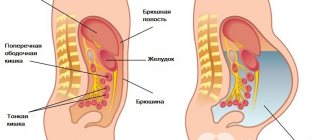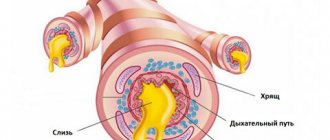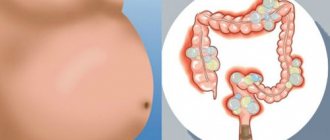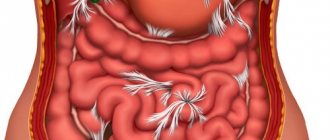The kidneys are a kind of laboratory of the human body. During the day they pump a lot of blood, cleanse it of toxins and other harmful waste products. Disturbances in the functioning of this organ often lead to the development of complex and sometimes irreversible processes that not only reduce the quality of life, but can also cause the death of the patient. Clinical signs of diseases affecting the kidneys may have pronounced or hidden symptoms, but if their functionality is impaired for more than 3 months, a nephrologist can make a diagnosis of “chronic kidney disease,” which can manifest itself against the background of other sluggish pathologies of the urinary system.
In urology, chronic kidney disease is often called chronic renal failure, which is a serious disease in which there is disruption of the functioning of almost all organs and systems. What is CKD, how does it develop, what are the symptoms, types of disease, how to treat and what prognosis awaits the patient? You can get answers to these questions by reading this article.
What is CKD?
Chronic kidney disease (CKD) is a pathology that combines several conditions in which damage or decreased function of the glomerular filtration rate (GFR) occurs in the kidney tissues. During the development of this disease, the nephrons of the kidneys die or are replaced by connective tissue. Such pathological processes lead to irreversible disturbances in the functioning of the kidneys, which are unable to perform their functions of purifying the blood and removing excess water and absorbing electrolytes.
Chronic kidney diseases often develop against the background of a disorder of water, electrolyte, nitrogen or acid-base balance, which lasts for several months. The diagnosis of CKD is most often made by a doctor after the results of differential diagnosis, the results of which make it possible to determine the underlying disease that caused the development of pathologies of the urinary system.
Those at risk for developing the disease are those with a history of pathologies of the cardiovascular system, diabetes mellitus, neurological diseases or pancreatic diseases. According to statistics, this disease is diagnosed in 10% of the population of different age categories, including children.
When diagnosing CKD, the GFR indicator is considered important, which allows one to determine the number of dead nephrons. When the readings are less than 60 ml per minute, and there are significant disturbances in the functioning of the urinary system, we can talk about the death of half of the nephrons in the renal tissues, which is already considered a fairly serious pathology with irreversible consequences.
Description of the disease
Chronic kidney disease (CKD) is a long-term disease in which the kidneys do not work as well as normal. Their function is reduced for 3 or more months.
CKD usually does not cause any symptoms until it reaches an advanced stage. In earlier stages, the disease is detected using blood and urine tests. The main symptoms of progressive kidney disease are:
- fatigue;
- swollen ankles, feet or hands (due to water retention);
- shortness of breath;
- nausea;
- blood in urine.
Kidneys
The kidneys are two bean-shaped organs located on the sides of the body, just below the rib cage. The kidneys' main role is to filter waste from the blood before turning it into urine. Kidneys also:
- help maintain blood pressure;
- Maintain proper levels of chemicals in the body, which in turn helps the heart and muscles function properly;
- produce vitamin D, which supports bone health;
- produce a substance called erythropoietin, which helps stimulate the production of red blood cells.
How common is chronic kidney disease?
CKD is very common and is mainly associated with aging. The older a person gets, the higher the likelihood of kidney disease. It is estimated that about one in five men and one in four women aged 65 to 74 years have some degree of chronic kidney disease.
The most common cause of CKD is damage caused by other chronic diseases, such as high blood pressure (hypertension) and diabetes.
CKD is more common in people of South Asian descent (people from India, Bangladesh, Sri Lanka and Pakistan) and blacks than in the general population. Reasons for this include higher rates of diabetes in South Asians and higher rates of high blood pressure in Africans or Caribbeans.
Causes
Chronic kidney disease most often develops in the presence of systemic or nephrological diseases, which may have indolent symptoms or manifest themselves with severe symptoms:
- chronic glomerulonephritis;
- chronic pyelonephritis;
- urolithiasis with impaired urine outflow from the renal pelvis;
- hydronephrosis;
- anatomical structure of the urinary system;
- malignant kidney lesions;
- systemic connective tissue diseases;
- arterial hypertension;
- acute renal failure;
- diabetes;
- hepatitis;
- gout;
- heredity;
- severe intoxication of the body;
- chronic alcoholism;
- polycystic ovary syndrome;
- long-term use of potent drugs;
In addition to the main causes, predisposing factors can act as a trigger for the development of this condition, including smoking, old age, regular nervous strain, and autoimmune disorders. Chronic kidney disease in children most often manifests itself as a result of a family history, when one of the parents suffers from severe pathologies or as a result of congenital defects.
Causes of chronic kidney disease
High blood pressure (hypertension) and diabetes are the most common causes of kidney disease. Evidence suggests that high blood pressure causes just over a quarter of all cases of kidney failure. Diabetes has been identified as the cause in about one third of all cases.
High blood pressure
Blood pressure is a measure of the pressure the heart creates in the arteries with each pulse. Too much blood pressure can damage the body's organs, leading to heart disease, stroke and poor kidney function.
The cause of about 90% of cases of high blood pressure is unknown, although there appears to be a connection between the disease and a person's overall health, diet and lifestyle.
Known risk factors for high blood pressure include:
- age (the risk of developing high blood pressure increases with age);
- a family history of high blood pressure (the condition seems to run in families);
- a person of African-Caribbean or South Asian descent;
- obesity;
- lack of physical activity;
- smoking;
- excessive alcohol consumption;
- a large amount of salt in the diet;
- fatty diet;
- stress.
Hypertension causes damage by affecting the small blood vessels in the kidneys. This prevents the filtration process from working properly.
Diabetes
Diabetes is a condition in which the body does not produce enough insulin (type 1 diabetes) or does not use insulin effectively (type 2 diabetes). Insulin is needed to regulate blood glucose (sugar) levels, preventing levels from becoming too high after meals and too low between meals.
If diabetes is not well controlled, too much glucose may build up in the blood. Glucose can damage the tiny filters in the kidneys, which affects the kidneys' ability to filter waste and fluids.
It is estimated that 20-40% of people with type 1 diabetes will develop kidney disease before they reach age 50. About 30% of people with type 2 diabetes also have signs of developing kidney damage.
Complications
If chronic kidney disease is not treated in time, the consequences can be irreversible and very disastrous. With constant disruption of organ function, the entire body suffers, so complications can have severe and irreversible consequences.
- fluid retention in the body.
- anemia;
- pathologies of the cardiovascular system;
- damage to the skeletal system;
- severe intoxication of the body;
- death.
Chronic kidney damage can combine a whole group of diseases that affect the organs of the urinary system, so before starting treatment, it is important to identify and eliminate the main etiological factor. Depending on the stage of chronic kidney disease, the stages can provoke certain disturbances in the functioning of internal organs, so the earlier the disease is diagnosed, the greater the chances of a successful recovery.
Classification and symptoms of chronic disease
The course of chronic renal failure is divided into 5 stages depending on the glomerular filtration rate (GFR). This parameter shows how much primary urine the kidneys produce per unit of time. Creatinine clearance is also taken into account - the rate at which the kidneys clear metabolic products. Manifestations of the disease differ in stages, based on which the degree of damage can be determined.
Stage 1
The classification of CKD is based on GFR. At the first stage of the disease, the rate is within normal limits or slightly increased (from 90 ml/min). At this stage there is no threat to human life.
The main danger is the absence of pronounced symptoms. If therapy is not prescribed in time, the disease moves to the next stage.
Stage 2
In chronic kidney disease stage 2, a reduced GFR is observed (from 60 to 90). The following manifestations occur:
- reduction in urine volume during daytime urination;
- constant thirst;
- drowsiness, fatigue after usual exercise;
- slight swelling of the limbs after sleep;
- slight increase in pressure;
- arrhythmia.
The second stage is diagnosed mainly in people over 60 years of age.
Stage 3
At stage 3 of chronic disease, the filtration rate decreases to 30-59 ml/min. The following symptoms are noted:
- persistent swelling every day;
- blood pressure surges;
- frequent urge to urinate, while daily diuresis is significantly reduced;
- impaired renal blood flow, accompanied by drowsiness, shortness of breath, rapid heartbeat, anemia;
- dry mouth and constant feeling of thirst;
- insomnia.
Symptoms at stage 3 constantly increase from moderate (mild) to moderate severity.
Stage 4
Chronic disease of stage 4 is characterized by severe course and severe symptoms. A person can no longer lead his usual lifestyle and most often becomes unable to work. GFR decreases to 15-30, urea and creatinine are no longer excreted in urine and accumulate in the blood.
Characteristic manifestations of this disease:
- constant muscle weakness, fatigue;
- dry mouth;
- decreased daily urine volume or its complete absence, anuria (urine does not enter the bladder);
- severe swelling of the limbs and face;
- obvious signs of intoxication of the body (nausea, vomiting, muscle pain, cramps);
- bursting pain in the lower back;
- severe skin itching.
Stage 5
With stage 5 chronic renal failure, GFR drops to 15 ml/min. This is the last (terminal) and most severe degree of the disease, in which a critical dose of toxins accumulates in the blood. The kidneys cannot cope with filtration, the death of kidney tissue begins, and uremia (self-poisoning with metabolic products) progresses. A person with terminal CKD needs artificial blood purification through dialysis.
At this stage, the kidneys completely lose their functionality. The functioning of other organs, including the respiratory system, is also disrupted.
Clinical picture:
- loss of appetite;
- nausea and vomiting;
- swelling throughout the day;
- cessation of urine production;
- dry mucous membranes;
- smell of ammonia from the mouth;
- intense skin itching;
- fatigue (sometimes due to weakness the patient cannot move);
- anemia;
- convulsions;
- arterial hypertension;
- palpitations, chest pain;
- pale skin.
Diagnostics
In order to make a correct diagnosis of kidney dysfunction, you need to undergo a series of laboratory and instrumental tests, which will be prescribed by a nephrologist or urologist after taking an anamnesis and studying the patient’s medical history.
- Urine and blood analysis.
- Ultrasound of the kidneys and abdominal organs.
- Kidney CT.
- Contrast urography.
- Analysis of GFR indicators (determination of creatinine clearance).
The research results will help the doctor create a complete picture of the disease, make the correct diagnosis, and prescribe appropriate treatment. If necessary, the doctor may prescribe other research methods, including the use of the MDRD formula, which allows you to determine the exact cause of the disease and determine the indicators of CKD with GFR. The correct formulation of the diagnosis is the first step on the path to recovery. The main thing is to recognize the disease in time and take all necessary measures to treat it.
Treatment methods
Treatment of CKD always consists of a set of therapeutic measures that allow influencing the cause, symptoms, and reducing the risks of complications. Therapy directly depends on the stage of the disease, the cause, the age of the patient and the characteristics of his body. Complex treatment may include taking medications and following a diet. If the disease is diagnosed in the last stages, then the patient needs constant hemodialysis, which will cleanse the blood of toxins and prolong the patient’s life. Curing CKD in the later stages is difficult and almost impossible, and the only way to improve a person’s life is an organ transplant.
Conservative therapy gives good results only in the initial stages of the disease. Patients are prescribed a number of medications, dietary nutrition, and adherence to work and rest schedules. With the right treatment, you can slow down the progression of the disease, improve the functioning of the kidneys and other organs and systems.
Drug therapy
Drug therapy will reduce the symptoms of uremia, reduce the content of nitrogen metabolic products in the blood, accelerate their elimination, and also eliminate the root cause. Therapy may include taking the following groups of drugs:
- Angiotensin-converting enzyme inhibitors.
- Angiotensin receptor blockers.
- Vitamin D preparations.
- Statins.
- Anabolic steroid.
Treatment of kidney failure
After confirmation of the diagnosis, the patient is transferred to inpatient treatment in the nephrology or urology department. The doctor prescribes complex therapy aimed at:
- suppression of symptoms;
- eliminating the cause of the disease;
- normalization of general condition;
- restoration of kidney function.
In the initial stages of the disease, nutritional adjustments and drug therapy are sufficient. Physiotherapeutic procedures are indicated to prevent relapses. In severe cases, when the kidney cannot cope with its tasks, replacement therapy (dialysis) is prescribed.
At different stages of the disease, it is permissible to use traditional methods of treatment, but only after consulting a doctor.
Nutrition
For chronic kidney disease, diet No. 7 according to Pevzner is indicated, which helps cleanse the body of waste and toxins. The daily diet includes:
- up to 60 g of proteins;
- up to 450 g carbohydrates;
- 100 g fat;
- salt no more than 2-3 g (during hemodialysis, salt is almost completely excluded).
The volume of liquid consumed is reduced to 800-1000 ml. The total energy value of food is 2500-3000 kilocalories per day.
Completely exclude from the diet:
- fried, fatty, smoked foods;
- canned food;
- alcohol;
- strong tea and coffee;
- chocolate;
- legumes;
- high fat dairy products.
Fasting days on juices, vegetables or fruits are recommended 1-2 times a week.
Drug therapy
The initial stage of CKD involves symptomatic therapy: reducing blood pressure, eliminating swelling, normalizing urination. At stages 3-4, diuretics are added to eliminate shortness of breath and swelling. If the acid-base balance is disturbed, drugs with sodium bicarbonate are prescribed.
Standard therapy for chronic kidney disease includes:
- Sorbents for removing toxins: Polysorb, Carbolen, Polyphepan.
- Drugs that enhance the excretion of sodium salts and other waste products of nitrogen metabolism: Lespenefril.
- Medicines for hypertension: Lasix, Furosemide (diuretics), Dopegit, Captopril.
- Iron-containing drugs for anemia: Ferroceron, Ferlatum, Maltofer.
- To restore mineral metabolism (normal levels of calcium and phosphorus): Osteochin, Calcium D3.
- To eliminate infections, antibiotics of the aminoglycoside group are most often prescribed: Gentamicin, Tobramycin, Amikacin.
- Hormonal drugs. Prescribed after kidney transplantation (Prednisolone, Methylprednisolone).
Replacement therapy
At stage 5, hemodialysis is prescribed - blood purification through an artificial kidney apparatus.
Peritoneal dialysis is recommended for people with low blood pressure, bleeding disorders and children. In this case, not an artificial membrane is used as a filter (as in hemodialysis), but the patient’s peritoneum. A special solution is injected into the abdominal cavity, into which decay products are gradually released.
Kidney transplant
At the terminal (last) stage of CKD, the only option to get rid of regular hemodialysis procedures is a kidney transplant.
Transplantation is complicated by finding a donor organ, which can take many years.
In order for the operation to be successful and the donor organ to take root, a preparatory program is carried out: correction of water and electrolyte disturbances, elimination of sources of infection, normalization of blood pressure and cardiovascular activity.
Folk remedies
Traditional medicine can only be used after consulting a doctor.
The most effective means:
- Pomegranate juice - to restore vitamin deficiency, strengthen the immune system and prevent infectious diseases.
- Infusion of corn silks (10 g of crushed silks per liter of boiling water). Contains vitamins K, B and ascorbic acid, has a diuretic effect.
- Tea made from rose hips to remove excess fluid and eliminate swelling. A tablespoon of chopped berries is poured into 0.5 liters of boiling water and left for 2 hours.
Nutrition for CKD
An integral part of treatment and prevention is considered to be a diet for chronic renal failure, which must be followed at all stages of the disease. Patients with impaired renal function are prescribed table No. 7a, b, p, which includes limiting protein foods. Patients are recommended to switch to plant protein and adhere to a vegetarian diet. The diet consists of limiting the following foods:
- cottage cheese;
- fatty meats;
- fish;
- legumes;
- any alcohol;
- butter.
It is important to reduce your salt intake. The patient is recommended to take no more than a third of a teaspoon per day. It is strictly forbidden to consume spicy, fried, fatty foods, as well as strong coffee and alcohol. Eating prohibited foods puts a significant strain on the kidneys. Patients are recommended to do “fasting days” or follow a mono-diet 2 times a week, which will consist of eating one product during the day.
When the patient is on dialysis, the diet, on the contrary, should consist of eating protein foods. It is recommended to consume at least 1 g of protein per 1 kg of body weight per day, and amino acids should also be included in the diet. The energy value of food should be 30–35 kcal per 1 kg of weight per day. An approximate menu will be prescribed by the attending physician individually for each patient.
Chronic kidney disease, treatment should always be prescribed by a doctor. This will increase the chances of a successful forecast.
Forecast
Chronic kidney disease is a potentially serious condition. People with CKD are known to have an increased risk of stroke or heart attack due to changes in blood circulation.
In some people, CKD can cause kidney failure, which is also known as end-stage kidney disease. In this situation, normal kidney functions stop working. People with end-stage kidney disease may need a treatment called dialysis to survive.
However, if the condition is diagnosed early, further kidney damage can be prevented through a combination of lifestyle changes and medications. These changes may also reduce your risk of stroke or heart attack. Therefore, it is very important to help yourself as quickly as possible.
Prevention
To reduce the risk of developing chronic kidney disease, it is necessary to promptly and correctly treat all concomitant diseases of the urinary system and internal organs. The following preventive measures will help reduce the risk of developing pathologies affecting the kidneys:
- quitting smoking and alcohol;
- proper and healthy nutrition;
- weight control;
- proper treatment of all concomitant diseases;
- absence of stress and nervous tension;
- regularly boosting immunity.
Kidney diseases are quite difficult to treat, but with timely diagnosis and proper therapy, it is much easier to reduce the risk of their complications. It is important to understand that preventing a disease is much easier than treating it, therefore, at the first sign of it, you should not hesitate to visit a doctor and in no case should you self-medicate.











